History
Already in December 1938, the history of nuclear weapons begins, when the two nuclear physicists Lise Meitner and Otto Hahn discovered nuclear fission and for the first time described the chain reaction: When a uranium atom splits, so-called fission, nuclear energy is released, but also neutrons that can split several uranium atoms. This opened up understanding of how nuclear energy can be used for nuclear power plants or atomic bombs. This changed everything.

1930's - The idea of making nuclear weapons
At the initiative of the physicist Leo Szilar, Albert Einstein wrote a letter to US President Franklin D Roosevelt in the fall of 1939, warning that Germany, on the basis of the newly acquired knowledge of nuclear fission, could produce atomic weapons. With Japan’s attack on Pearl Harbor in December 1941, the United States was drawn into World War II. Militarily and economically, the conditions were thereby created for a major investment in developing nuclear weapons.
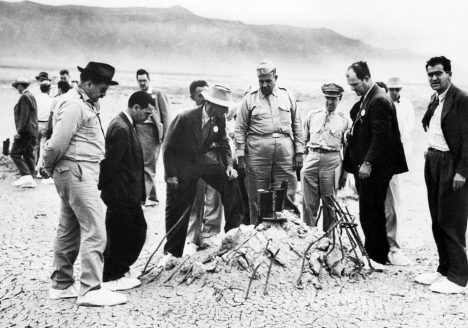
1942 – The Manhattan Project
In 1942, the United States began the so-called Manhattan Project with the goal of developing an atomic bomb. The plan was to get ahead of Germany, which was also said to be working on developing an atomic bomb. The Manhattan Project was very large and one source states that at one point over 600,000 people were working on the project. In 1943, Canada and Great Britain also joined the project.
General Leslie Groves was in charge of the military aspects of the project and the scientific work was led by Robert Oppenheimer, professor of physics. The research took place at several different locations, including Oak Ridge in Tennessee, Hanford in Washington state and Los Alamos in New Mexico.
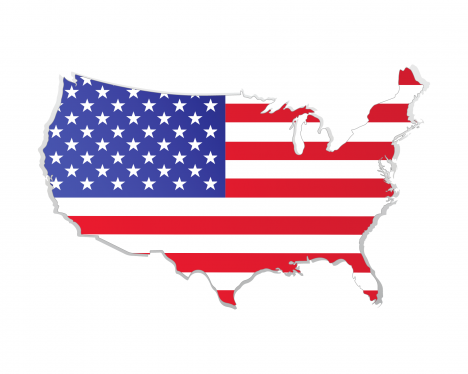
1945 – The first nuclear weapon is detonated
The starting shot for what has come to be known as the “atomic age” was a plutonium bomb that went by the name Trinity. At 05:29:45 on the morning of July 16, 1945, the bomb detonated at the Alamogordo test site in New Mexico, USA. The bomb measured an explosive force equivalent to about 20 kilotons of TNT.
Physicist, and one of the protagonists of the Manhattan Project, Robert Oppenheimer, has come to be known as the “Father of the Atomic Bomb” for his work on the first atomic bomb.
When Trinity detonated at the test site, it is said that Oppenheimer quoted a text from the Hindu scripture Bhagavadgita: “If the radiance of a thousand suns were to burst at once into the sky, that would be like the splendor of the mighty one. Now I am become Death, the destroyer of worlds.”
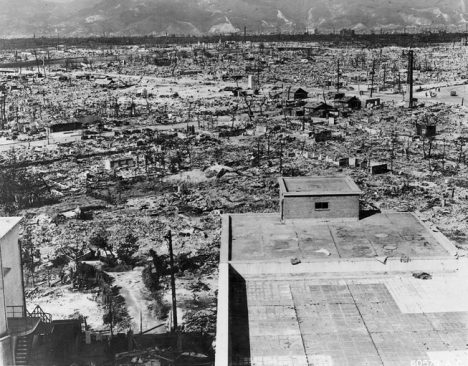
1945 - Hiroshima and Nagasaki
Some say that US President Truman wanted to force the Japanese army to surrender to bring a quick end to the raging World War II. Therefore, he gave the order for Japan to be bombed with an atomic bomb. At the same time, Truman wanted to show Soviet leader Stalin what the United States had in its arsenal, even though the Soviet Union was currently an ally.
On August 6, 1945, a bomber was loaded to drop the atomic bomb, called Little Boy, on the Japanese port city of Hiroshima. The attack with the hitherto basically untested weapon was as much a test. The idea was also to see what effects the atomic bomb would have on built-up areas, as it had not been tested before.
Two-thirds of Hiroshima was destroyed, and by the end of the war in 1945, over 140,000 people had died from the immediate and long-term consequences of the bomb.
Three days later, on August 9, 1945, the United States dropped another atomic bomb. This had been named Fat Man and was dropped over the Japanese city of Nagasaki. Around 74,000 people died in Nagasaki as a result of the atomic bomb.
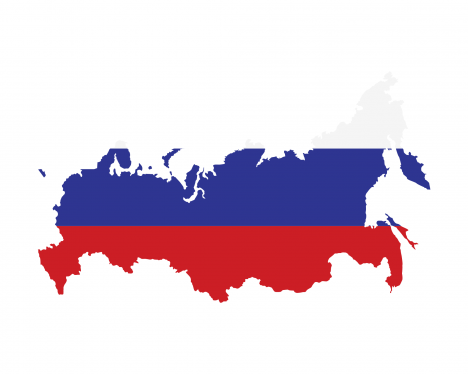
1949 – The Soviet Union acquires nuclear weapons
The bombing of Hiroshima and Nagasaki led the leaders of the Soviet Union to immediately launch a massive project to catch up with the United States. They received significant help from spies who believed that the US would not have a monopoly on nuclear weapons. The first Soviet nuclear weapon was test-detonated in 1949. It was the starting point for the arms race with nuclear weapons.
The development of larger nuclear weapons and of hydrogen bombs then proceeded very quickly in both the United States and the Soviet Union. In 1951 and 1953, respectively, the United States and the Soviet Union detonated their first hydrogen bombs.
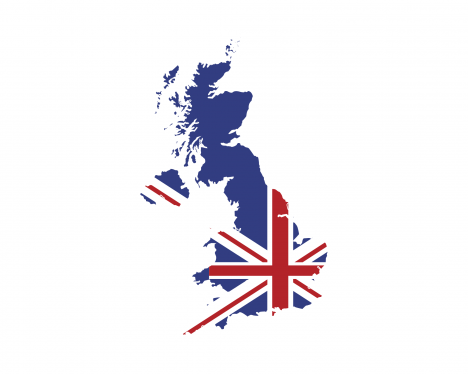
1952 – United Kingdom acquires nuclear weapons
On 3 October 1952, United Kingdom conducted the first British test explosion called Operation Hurricane on the Montebello Islands in Western Australia.
Max Kimber, military, who participated in the British test explosions described the effect on wildlife: “There were hundreds of thousands of dead turtles on the beach. They had come up on the beach and were obviously killed by the radiation. It was full of turtles from one end of the site to the other.”
In 1957, UK detonated its first hydrogen bomb. In 1958, the country began cooperation with the United States, and British tests were carried out after that in the Nevada desert, USA.
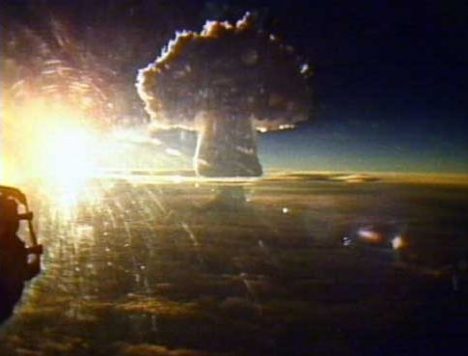
1958 – The Soviet Union and the United States agree on a moratorium
In 1958, the United States and the Soviet Union decide to temporarily stop testing nuclear weapons. It was then perceived that there was an opportunity to negotiate an agreement regarding nuclear weapon test explosions. But political and military developments meant that the break was short-lived.
In 1961, the Soviets broke the ceasefire and rapidly detonated 30 bombs, including the world’s largest hydrogen bomb to date, the Tsar bomb, at 57 megatons. In comparison, the bomb dropped on Hiroshima was 20 kilotons. After the Soviet test explosions, the US resumed its testing in the Pacific.
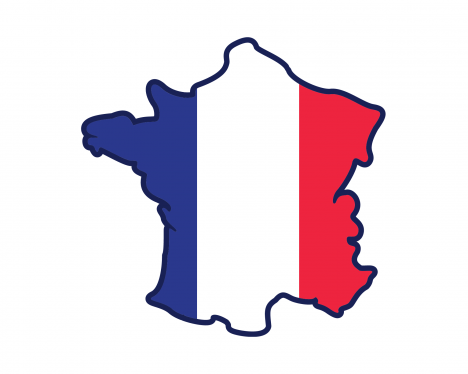
1960 –France becomes the fourth nuclear power
On February 13, 1960, France announced itself as the fourth nuclear power by test-detonating a nuclear weapon in the desert of Algeria.
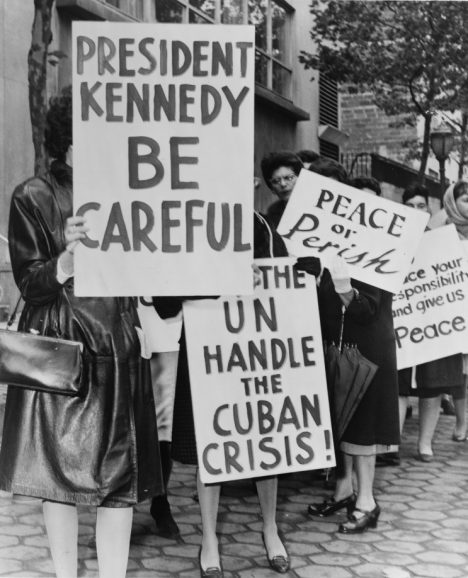
1960s to 80s - The Cold War
During the Cold War, there was an intense arms race between the United States and the Soviet Union. The states spied on each other’s nuclear arsenals, and every time one was suspected of increasing its arsenals or acquiring a new type of nuclear weapon, the other followed suit, happy to outdo the enemy a few notches.
Nothing could stop the arms race, because there was a risk that the enemy would have more and more powerful nuclear weapons. Both states had nuclear weapons aimed at each other, ready to be fired within minutes. Both states also had advanced warning systems to be able to identify a hostile nuclear attack and respond to the attack with a counterattack – before their own territory had been hit.
In October 1962, the world was on the brink of nuclear war during the Cuban Missile Crisis when the Soviet Union planned to deploy nuclear missiles on Cuba, something the United States opposed. For two weeks the rest of the world held its breath and by the end of October the crisis could be resolved.
The arms race reached its absolute peak in 1986 when the two superpowers together had 70,500 nuclear weapons.
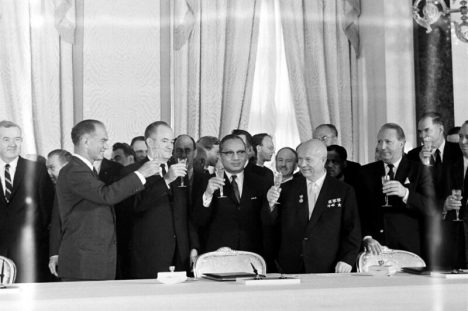
1963 – The Partial Test Ban Treaty (PTBT) enters into force
The severe medical consequences of radioactive substances from the increasingly extensive atmospheric test explosions had by this time led to major protests.
A concern about radioactive poisoning spread across the world. American mothers collected baby teeth from their children for research. Thousands of teeth were sent in for analysis and showed alarmingly high levels of radioactive strontium, which could be traced to the nuclear weapons tests. Pressure from the mothers’ protests helped force a halt to nuclear test explosions.
The protests led to the Partial Test Ban Treaty (PTBT) signed by the United States, the Soviet Union, and Great Britain in Moscow in 1963. The PTBT prohibited atmospheric and underwater testing, but not underground testing.
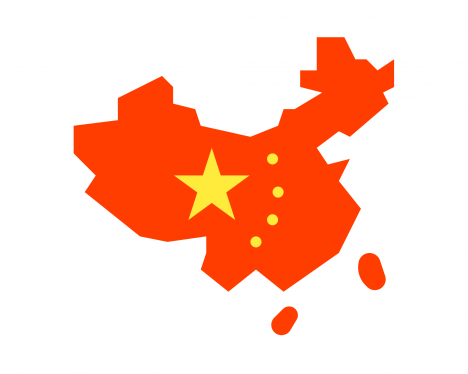
1964 – China acquires nuclear weapons
China began its nuclear weapons program in the mid-1950s, after the Korean War. At first, they had the help of Soviet advisers and equipment. But increasingly chilly relations between the countries caused the Soviet Union to withdraw all support. In 1964, China detonated its first atomic bomb in Lop Nur in the Gobi desert and in 1967 the country tested its first hydrogen bomb.
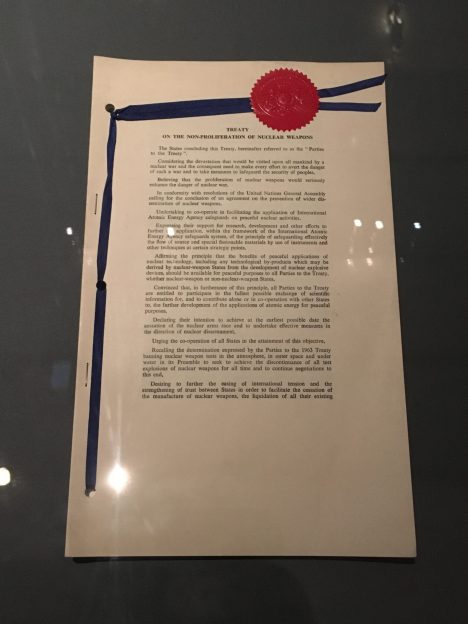
1970 – The Non-Proliferation Treaty enters into force
In 1968 a Treaty on Nuclear Disarmament and Non-Proliferation was negotiated and in 1970 the Non-Proliferation Treaty, NPT, entered into force. The agreement consists of three pillars: non-proliferation, disarmament and the peaceful use of nuclear power. The agreement defined the then five nuclear-weapon states as nuclear-weapon states, in exchange for them to disarm their nuclear arsenals; United States, Soviet Union,United Kingdom, France and China.
Four nuclear weapons states have not signed the treaty and is not recognized by the treaty; India, Pakistan and Israel. North Korea is the only country that left the agreement, and then developed nuclear weapons.
The nuclear-weapon states have not yet fulfilled their commitment in Article 6 of the agreement to disarm, and even today the nuclear-weapon states are modernizing their nuclear arsenals and developing new nuclear weapons.
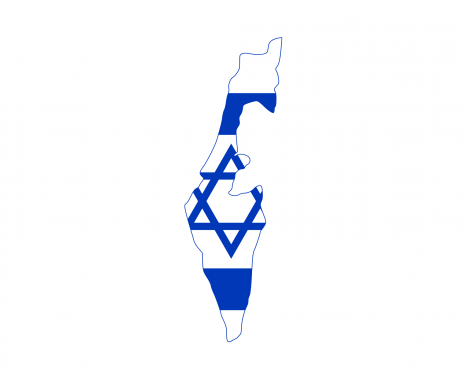
1986 – Israel's nuclear weapons program is revealed
Israel’s nuclear weapons program and nuclear weapons possession were revealed in 1986 by Israeli nuclear physicist Mordechai Vanunu in the British media. Mordechai Vanunu was kidnapped and imprisoned by Israel and spent 18 years in prison, including 11 years in solitary confinement.
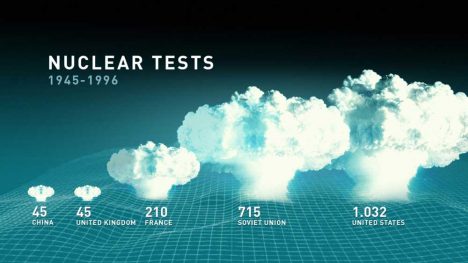
1996 – The Comprehensive Test Ban Treaty (CTBT) is negotiated
Since the Partial Test Ban Treaty (PTBT) did not prohibit underground nuclear weapons tests, the nuclear weapons states continued to conduct underground tests. Under the pressure of strong international opinion, negotiations continued on an agreement against all nuclear weapons tests. It led to the Comprehensive Test Ban Treaty (CTBT), which was negotiated in 1996, but the agreement has still not entered into force.
The agreement has still not entered into force due to the need for some states to join the agreement, but still have not. They are China, Egypt, India, Israel, North Korea, Pakistan and the United States. However, all these states have refrained from test explosions since 1998, even underground, with the exception of North Korea.
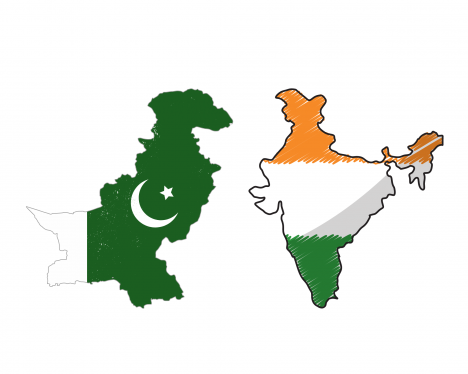
1998 – India and Pakistan acquire nuclear weapons
India carried out what they called a “peaceful” test explosion, which was called “Smiling Buddah”, as early as 1974 and declared itself a nuclear weapon state in 1998 after conducting a series of nuclear weapons tests at the Pokhran facility in Rajasthan.
After India’s test explosion in 1974, Pakistan began to develop its nuclear weapons program and tested its first nuclear weapon in 1998. It was the start of an arms race between the countries that has been strongly condemned by the UN Security Council.
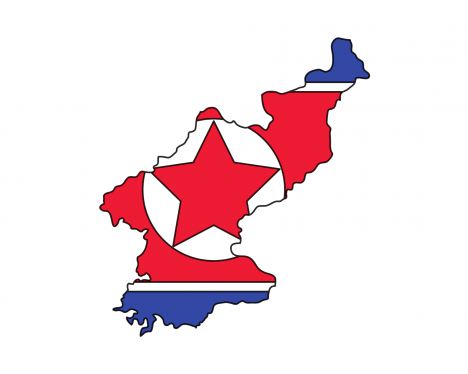
2006 – North Korea detonates its first nuclear weapon
In 2003 North Korea left the Non-Proliferation Treaty and in 2006 the country conducted its first test explosion. The effect was low and the test explosion was probably partly a failure. The test was strongly condemned by the UN Security Council, which described the test explosion as a “clear threat to international peace and security”.
In total, North Korea has conducted six nuclear weapons tests. The latest explosion is believed to have been a hydrogen bomb with an explosive yield of between 70 and 280 kilotons.
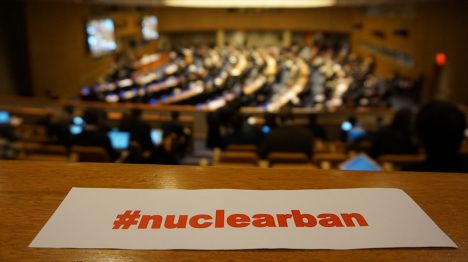
2017 – A ban on nuclear weapons is negotiated
In 2017, the UN Treaty on the Prohibition of Nuclear Weapons (TPNW) was negotiated at the UN headquarters in New York. The TPNW is the first of its kind to consistently prohibit the use, threat of use, testing, development, production of nuclear weapons. The ban came into effect in January 2021.

Sources and more information
Einstein-Szilard letter, Atomic Herritage Foundation
The Nuclear Security Blog, “How many people worked on the Manhattan Project?”, Alex Wellerstein
Atomic bombings of Hiroshima and Nagasaki, Britannica
Hydrogen Bomb – 1950, Atomic Heritage Foundation
The Soviet Response, Atomicarchive.com
U.S. and UK Nuclear Cooperation After 50 Years, Center for Strategic and International Studies
The Power of Women Strike for Peace, Kathy Crandall Robinson, Arms Control Association
Nuclear Close Calls: The Cuban Missile Crisis, Atomic Heritage Foundation
Treaty on the Non-Proliferation of Nuclear Weapons, United Nations Office for Disarmament Affairs
The Spread of Nuclear Weapons: China, Britannica
Mordechai Vanunu, Right Livelihood
The Treaty, International Campaign to Abolish Nuclear Weapons, ICAN




